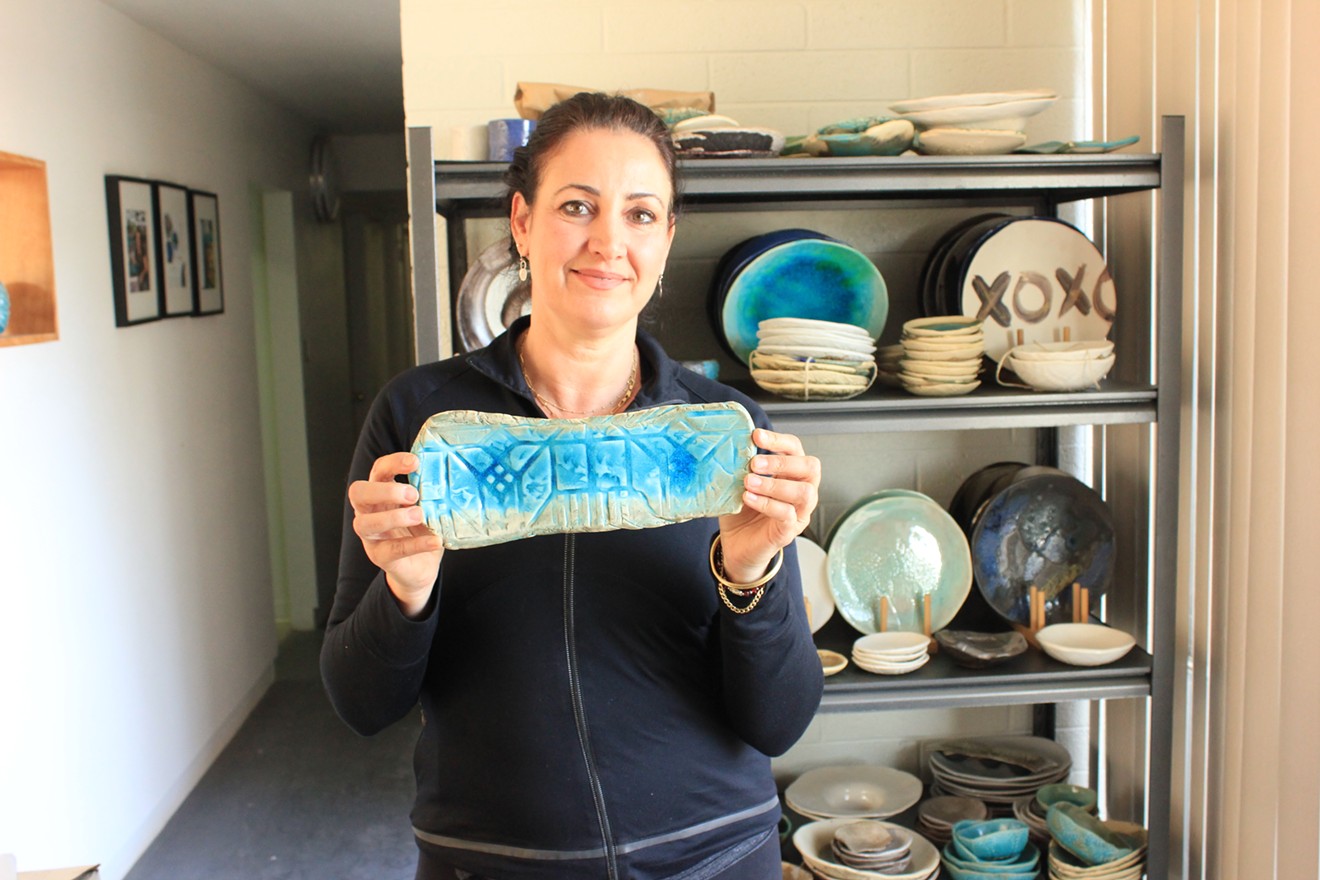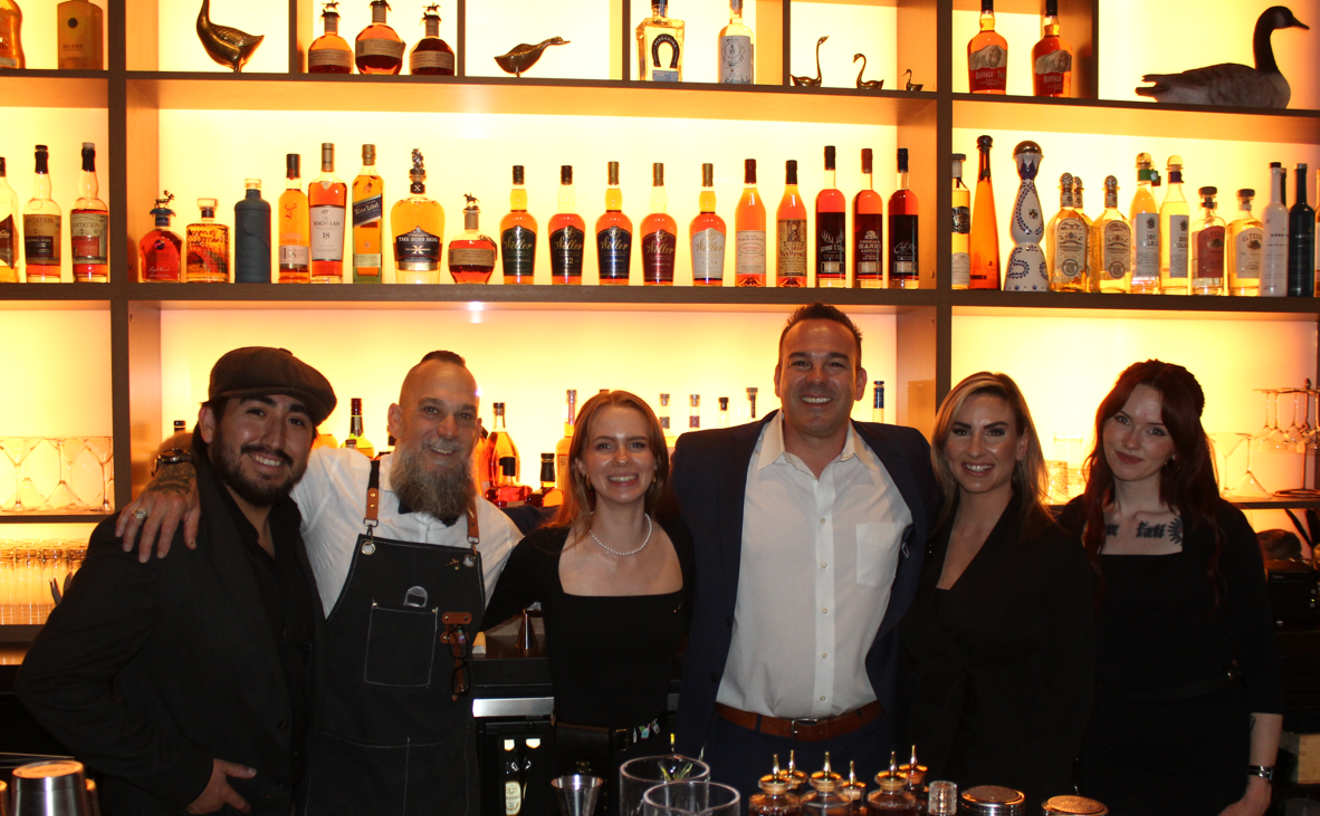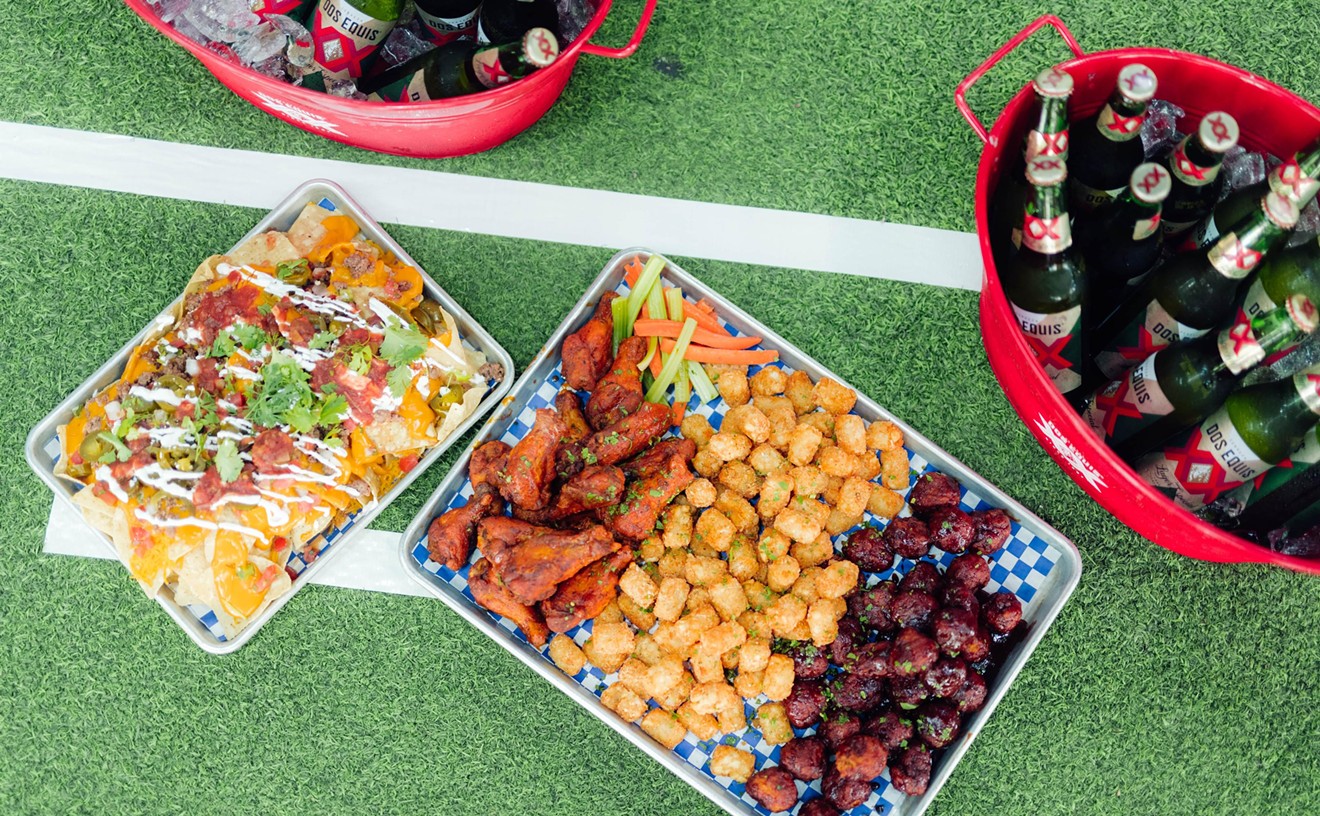The cobalt waters of the South Atlantic have dripped into Christiane Barbato’s plates. She started making ceramics in high school, after she moved from Brazil to Arizona. Summers, Barbato lived on Florianópolis, an island off Brazil’s southern coast. The colors she once saw in the ocean splash across her stoneware today, lush greens and lapis lazuli, swirled turquoise and cerulean in glazed pools in the bottoms of lumpy, nicely imperfect bowls, as well as purple hues like amethyst and “wine stain.”
Some of the Valley’s best chefs have started to plate on Barbato’s work. (Kevin Binkley is one.) Using glaze and three colors of California clay, Barbato hand-shapes a host of bowls, plates, and serving vessels. She runs Blue Door Ceramics out of her home in north Phoenix. She does custom orders for chefs, and she ships her usable art to kitchens from Oahu to Saudi Arabia.
“I think there’s a moment now around chefs,” she says. “They want their food to be presented on different plates. I don’t know if they got bored of the white ones, but they prefer these organic shapes."
Barbato is right. Chefs from San Francisco to New York have started to ditch white porcelain for artisan stoneware. The stoneware is more durable, for one. Working with a ceramist, too, allows chefs to tailor dinnerware to the shapes and colors of their imaginations (which may accent the shapes and colors of their food). Finally, a chef who supports a small-scale ceramist like Barbato is funneling money back into the local economy and garnering karmic bonus points, same as a chef who buys local peaches or mesquite honey.
At first, though, nobody wanted Barbato’s sea-inspired plates.
She set up her studio not long after she turned 40. After obtaining an education in Arizona, she returned to Brazil and worked in business in Sao Paolo for more than a decade. But, as often happens, she gave into her creative side.
It really started with a visit from a chef in Chicago.
He flew in and spent a day with Barbato designing plates. It was her first big restaurant order. Not long after, other chefs from Chicago started calling. Soon, things started to snowball, and before long Barbato was shipping dinnerware to Hawaii; New York City; Santa Barbara, California; and the Middle East.
But it wasn’t until later that metro Phoenix chefs came calling. That started last year. Today, you can find her dinnerware at Binkley’s, Roka Akor (in Scottsdale and non-Arizona locations), Bourbon Steak, Artizen, and a growing number of others.
“The processes vary a lot, but I like to make organic forms because I am inspired by nature’s colors and forms," she says. "There’s a lot of artists who use a wheel to throw ceramics. I prefer organic shapes; that’s why I don’t use the wheel.”
Barbato is offbeat in skipping the potter’s wheel. Instead, she thins clay with a seasoned rolling pin, which she says is “like opening up a pie dough.” She then shapes clay with her hands, using handmade molds and awl-like tools for executing fine designs. Barbato prefers a silky matte finish over a full-on wet-looking gloss (but will lean glossy if clients want). She achieves that hybrid, as well as her tropical-sea colors, through use of glaze.
The start-to-finish process of making artisan ceramics is tedious, especially in Arizona. “Because we are in Arizona, the process is different than the rest of the country,” Barbato says. She points to the arid climate. She has to intermittently cover and uncover drying clay so that it won’t desiccate too fast and crack. That doesn’t sound so bad — but she runs a one-woman studio.
Hundreds of clay vessels litter her studio in various states of doneness. There’s raw clay, brown, that she has just rolled out. A row of newly shaped bowls is covered by a tarp. There are finished dinner sets of three pieces each, each unique, each meant to help kindle the vision of the next chef come in to collaborate with her on a custom design. Some ceramics stand bone-white from being bisque-fired, the glaze yet to be applied. Some are baking at 2,200 degrees in the electric kiln.
“It’s a lot of fun working with the chefs because it’s not a production line,” she says. “It’s not a boring thing. Every week I’m creating something different for a different chef.”
Her studio spills into the backyard, and hundreds of bowl-strewn tables and shelves march across a flat before a hill. The desert sky radiates heat. It pulses a magnetic blue not that differently from the South Atlantic. Barbato finds inspiration in her present surroundings as well as her past, in the sky and the rock formations, in the turquoise stones. Her plates are rooted in place just like food can be.
(If you're interested in browsing some dinnerware, check out Blue Door Ceramics' website.)
[
{
"name": "Air - MediumRectangle - Inline Content - Mobile Display Size",
"component": "18478561",
"insertPoint": "2",
"requiredCountToDisplay": "2"
},{
"name": "Editor Picks",
"component": "16759093",
"insertPoint": "4",
"requiredCountToDisplay": "1"
},{
"name": "Inline Links",
"component": "17980324",
"insertPoint": "8th",
"startingPoint": 8,
"requiredCountToDisplay": "7",
"maxInsertions": 25
},{
"name": "Air - MediumRectangle - Combo - Inline Content",
"component": "16759092",
"insertPoint": "8th",
"startingPoint": 8,
"requiredCountToDisplay": "7",
"maxInsertions": 25
},{
"name": "Inline Links",
"component": "17980324",
"insertPoint": "8th",
"startingPoint": 12,
"requiredCountToDisplay": "11",
"maxInsertions": 24
},{
"name": "Air - Leaderboard Tower - Combo - Inline Content",
"component": "16759094",
"insertPoint": "8th",
"startingPoint": 12,
"requiredCountToDisplay": "11",
"maxInsertions": 24
}
]
















